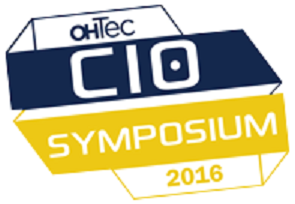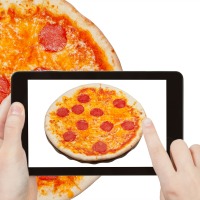We spend a lot of time with our clients working through mobile user experience, and helping them with the realization that mobile is not an extension of a Web site. In fact, it is the opposite and the detailed, granular functionality that makes sense in a desktop application or Web site do not necessarily translate to the mobile channel. We encourage clients, when developing their mobile strategy, to focus on the high value, common transactions and keep it simple. Mobile is all about immediacy.
While all of that is true, one of the primary drivers behind this thinking is the need to account for mobile’s touch interface, its advantages, and yes, its limitations. There is only so much interaction that one can manage through gestures on a two dimensional pane of glass. Anyone who has tried to edit a complex spreadsheet, or even write and edit large amounts of text on a phone or a tablet understands these limitations. If we’re going to drive end-to-end productivity via mobile, we have to think beyond the glass.
The return of the stylus
One limitation associated with touchscreen is the inability to type in a rapid, natural manner. Perhaps the only thing more painstaking than sitting in a meeting, waiting while someone types out a note or action item on their virtual keyboard, was the old approach where people would scribble individual letters with a plastic stylus using Palm’s graffiti, or similar mechanism. Moving away from resistive screens to capacitive has greatly improved the touch interface, but the due to a lack of sensitivity in capacitive screens, the new capacitive styli really don’t do much to improve over the accuracy of using your finger. Anyone who has tried using one to take notes on a mobile device can attest to the fact that while feasible, the necessarily large size of the writing makes it an impractical alternative to traditional pen and paper notes.
 In order to address this limitation, a new crop of “pen” based devices have been cropping up, including the HTC Flyer and JetStream, as well as the recently launched Samsung Galaxy Note. These devices use a touch sensitive, context aware “pen”, which allow better note taking and drawing on screen. I’ve been playing with the Note for a few days now, and while there is still a lot of room for improvement, I can safely declare it a step in the right direction. I’m not necessarily sold on the 5-inch size that places it somewhere between a smartphone and a tablet, but the inclusion of a “pen” allows me to take handwritten notes, in a non-disruptive manner, during meetings and presentations. Syncing these notes up with a tool like Evernote has allowed me to completely forego a traditional notebook.
In order to address this limitation, a new crop of “pen” based devices have been cropping up, including the HTC Flyer and JetStream, as well as the recently launched Samsung Galaxy Note. These devices use a touch sensitive, context aware “pen”, which allow better note taking and drawing on screen. I’ve been playing with the Note for a few days now, and while there is still a lot of room for improvement, I can safely declare it a step in the right direction. I’m not necessarily sold on the 5-inch size that places it somewhere between a smartphone and a tablet, but the inclusion of a “pen” allows me to take handwritten notes, in a non-disruptive manner, during meetings and presentations. Syncing these notes up with a tool like Evernote has allowed me to completely forego a traditional notebook.
Bridging the physical/digital divide
Another limitation of mobile interfaces is the screen real estate and the ability to browse large amounts of content at the same time. Sure, any good mobile optimized design will parse the content for consumption one screen at a time, but this requires a paradigm shift on the part of the user, and certainly isn’t as easy as browsing an entire product selection across multiple shelves.
 Tesco recently rolled out a novel way to overcome this limitation in South Korea. By placing large, back-lit displays within subway stations, Tesco was able to allow consumers to shop via their mobile device, while mimicking the in-store experience. By scanning the QR code below the products they wanted to purchase, the user would add these physical goods to their mobile shopping cart. Following mobile check-out, Tesco would then deliver the products to the users’ home. This creative use of technology has allowed Tesco to drive mobile adoption and grow their market share in South Korea, moving from being the number five retailer to number two in the market.
Tesco recently rolled out a novel way to overcome this limitation in South Korea. By placing large, back-lit displays within subway stations, Tesco was able to allow consumers to shop via their mobile device, while mimicking the in-store experience. By scanning the QR code below the products they wanted to purchase, the user would add these physical goods to their mobile shopping cart. Following mobile check-out, Tesco would then deliver the products to the users’ home. This creative use of technology has allowed Tesco to drive mobile adoption and grow their market share in South Korea, moving from being the number five retailer to number two in the market.
This approach demonstrates the opportunity to leverage QR codes for more than simple URLs and how they should be applied more universally. Consider placing a QR code at the bottom of each article within a magazine to allow users to virtually bookmark the content for future consumption and sharing, or like Tesco, utilizing product specific QR codes within print catalogs.
Token tablet interaction
The final category of methods for thinking beyond the glass is probably more of a novelty at this point, but suggests a broader set of use cases which should be considered when trying to better engage users. Through a combination of capacitive sensors placed on the bottom of tokens, companies are providing a unique way of using physical objects to engage and control on-screen content. Hasbro’s THE GAME OF LIFE: zAPPed Edition and Disney Pixar’s Cars 2 AppMATes are great examples of this technology.
 By combing the tokens, other external elements and the tablet interface, these toys show us how we can integrate mobile into our broader interactions to create a more compelling experience.
By combing the tokens, other external elements and the tablet interface, these toys show us how we can integrate mobile into our broader interactions to create a more compelling experience.
Regardless of which, if any, of these methods you actually incorporate into your mobile strategy and application design, the broader point is that you may need to think beyond the glass in order to extend the value of the mobile interaction and drive adoption.






